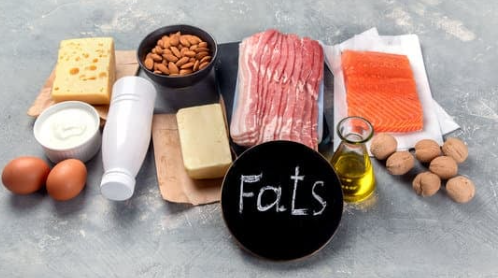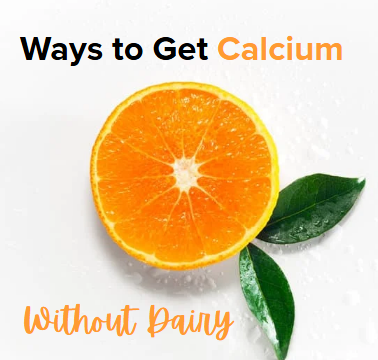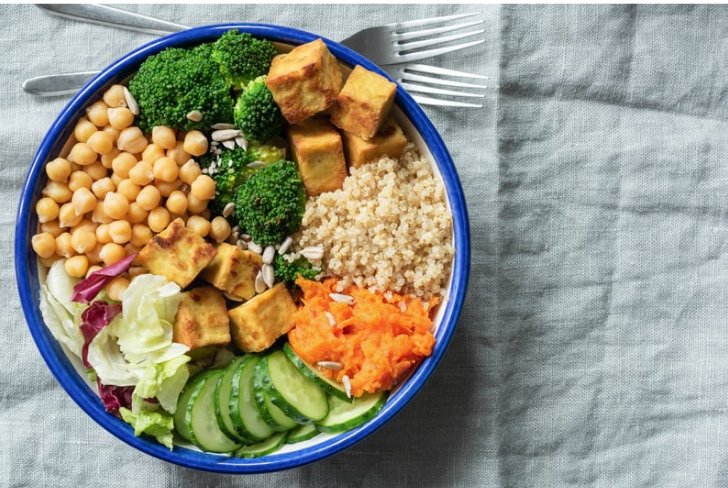It's true that protein is good for us. But is more really better? How do you know how much you really need in order to reach your goals, whether weight loss, muscle building or otherwise?
Protein Basics
Protein is a macronutrient that supplies both calories and 20 different amino acids for the human body. Amino acids are necessary building blocks that are used to:
- Build, repair and maintain body tissues (including muscle)
- Make hemoglobin, which carries oxygen to the cells
- Form antibodies that fight infection and disease
- Produce hormones and enzymes that regulate body processes
Because protein is involved in so many important bodily functions, it makes sense that people often have questions about it:
How do I know if I’m getting enough protein?
Should I use a protein powder supplement?
Will more protein help me lose more weight or build more muscle?
Should I use a protein powder supplement?
Will more protein help me lose more weight or build more muscle?
As it turns out, most people in modern industrialized nations are eating enough protein to meet or exceed their body's needs—often without even trying.
How Much Protein Do You Really Need?
You'll get different answers depending on who you ask. High-intensity exercisers and bodybuilders may say one thing. A dietitian might say another. Your doctor could tell you something entirely different. It's no wonder 71 percent of grocery shoppers surveyed in 2014 by the consumer research firm The NPD Group reported being uncertain about how much protein they should be eating.
Reputable health and nutrition groups have created recommendations based on years of nutritional research to determine optimal protein levels for adults.
The Recommended Dietary Allowance (RDA), established by The Food and Nutrition Board of the National Academy of Sciences is based on a bodyweight: 0.8 grams protein per kilogram of body weight for a healthy adult. That is roughly 54 grams daily for a 150-pound female, or 71 grams daily for a 195-pound male. This calculation doesn't factor exercise into the equation, and it might overestimate protein needs for people who are overweight or obese (excess weight in the form of body fat does not increase a person's protein requirements).
The Food and Nutrition Board of the National Academy of Sciences has also established an Acceptable Macronutrient Distribution Range (AMDR) for protein based on one's actual calorie intake, saying that protein should make up 10-35 percent of daily calories for the healthy adult. That is roughly 38-131 grams daily for someone eating 1,500 calories, or 45-158 grams daily when eating 1,800 calories per day. This calculation isn't based on exercise or body size, but the average amount of food a person eats. However, when following a lower-calorie diet for weight loss, the low end of this range is too low for many people.
Factoring Exercise into the Protein Equation
Exercise definitely impacts a person's protein needs as exercisers generally need more calories to support their activity, as well as more protein to help preserve and rebuild muscle. The average exerciser performing 30-60 minutes of planned cardio and/or strength training per day does not need additional protein beyond the recommendations above.
Endurance athletes, such as people training for collegiate and professional sports or a full marathon, triathlon or iIronman competition generally need more protein than the guidelines above: 1.2-1.4 grams of protein per kilogram of body weight. That is roughly 82-95 grams daily for a 150-pound female, or 106-124 grams daily for a 195-pound male.
Athletes who perform strength training at a competitive level, such as people conditioning for collegiate and professional competitions or bodybuilders might need even more protein to support their goals—up to 1.7 grams of protein per kilogram of body weight. That translates to 116 grams daily for a 150-pound female, or 150 grams daily for a 195-pound male.
For a more individualized protein assessment, work with a registered dietitian.
Will Eating More Protein Help You Lose Weight and/or Gain Muscle?
Many people make the mistake of eating above and beyond the amount of protein that they need for health and muscle recovery, thinking that more protein is better. Contrary to popular belief, studies have consistently shown that consuming more than the recommended amount of protein for your workouts (as explained above) does not lead to further increases in muscle size or strength. The reason for this is twofold. First, there is a limit to the rate at which protein can be synthesized into muscle. Just because more protein is available doesn't mean it's all becoming muscle tissue. Second, muscle size is mostly determined by one’s genetic makeup and training program—not by how much protein one eats. This has been demonstrated through protein-nitrogen balance studies.
You might have heard personal trainers or other fitness professionals say that consuming more protein will produce better results, both in fitness levels and aesthetic appearance. However, well-meaning personal trainers often overestimate protein needs by using calculations established for professional athletes instead of using calculations for average exercisers. Most exercisers (even those who run or lift weights regularly) do not fall into the category of a professional endurance athlete or strength training athlete.
Additionally, it's worth noting that some seemingly credible trainers and nutrition professionals earn additional income by selling protein supplements. It is often in their interest to tell you that you need more protein—including a specific supplement that they happen to sell. This is an unethical practice and a conflict of interest. Do your own research to determine if you really need more protein, or contact a registered dietitian to help you determine your protein needs. Rest assured that, in most cases, by sticking to your given range, you will get enough protein to help your body function at its best while meeting your fitness goals.
Recommended Protein Sources
Getting your protein from real food is always best, because it not only provides protein, but other needed vitamins and minerals as well. Real food is also less expensive than supplements and designed for your body to digest and utilize. Supplements aren't necessarily digested or absorbed any better than real food.
Good food sources for protein include lean meats (beef, pork, lamb, poultry, fish, shellfish), eggs, milk, yogurt, cheese, some milk alternatives, beans, legumes, lentils, tofu and soy products, nuts, seeds and nut butters. Try incorporating at least one of these foods into each meal and snack. For example, try eggs for breakfast, grilled chicken with greens for lunch, and a pork and veggie stir-fry for dinner. If you're a vegetarian, or choose to consume fewer animal products, try a tofu scramble, lentil soup or beans and rice.
Diagnosing a protein deficiency requires a complex nutritional assessment, physical assessment and lab testing. A low protein intake can occur for an extended period of time—long before signs and symptoms of deficiency develop. Signs of protein malnutrition include edema (swelling in the feet, ankles and legs), anemia, fatigue, hair loss, changes in nail condition, diarrhea, muscle wasting, dry skin, thinning of skin with skin breakdown (ulcers and wounds), a weaker immune system and infections. When these symptoms are experienced, the deficiency is already at a dangerous level and can quickly lead to medical complications.
Contact your physician or a registered dietitian if you suspect that your eating plan is lacking in protein. Protein needs should also be individually assessed in people with certain diseases, including kidney disease, skin breakdown (wounds) and cancer.
Protein FAQs
What about protein shakes and supplements?
If you are unable to meet your protein needs through regular meals and snacks, then using a protein supplement may work for you. You should start by investigating the source of protein used in the supplement to see what is most appropriate for your needs.
What are the highest quality protein sources? Are certain proteins more easily absorbed than others?
The current preferred method used to evaluate the quality of protein is the Protein Digestibility Corrected Amino Acid Score (PDCAAS*). This method of evaluating protein quality is based not only on the amino acid requirements of humans, but also the human body’s ability to digest the protein in question. The PDCAAS rating was adopted by the U.S. Food and Drug Administration (FDA) and the Food and Agricultural Organization of the World Health Organization (WHO) in 1993 as the best method to determine protein quality.
A PDCAAS value of 1 is the highest and 0 is the lowest. For foods with lower scores, combining protein sources can be very effective. Grain protein (scored at 0.4-0.5, limited by lysine) combined with white bean protein (scored at 0.6-0.7, limited by methionine) gives a PDCAAS of about 1.
| Food | PDCAAS |
| Casein (milk protein) | 1.00 |
| Egg white | 1.00 |
| Soy protein | 1.00 |
| Whey (milk protein) | 1.00 |
| Beef | 0.92 |
| Soybeans | 0.91 |
| Chickpeas | 0.78 |
| Fruits | 0.76 |
| Vegetables | 0.73 |
| Other legumes | 0.70 |
| Cereals | 0.59 |
| Whole wheat | 0.42 |
Source
American Dietetic Association; Dietitians of Canada; American College of Sports Medicine, Rodriguez NR, Di Marco NM, Langley S. American College of Sports Medicine position stand. "Nutrition and athletic performance." Med Sci Sports Exerc. 2009 Mar;41(3):709-31.








.jpg)




